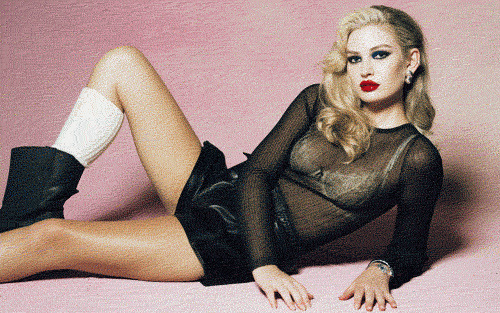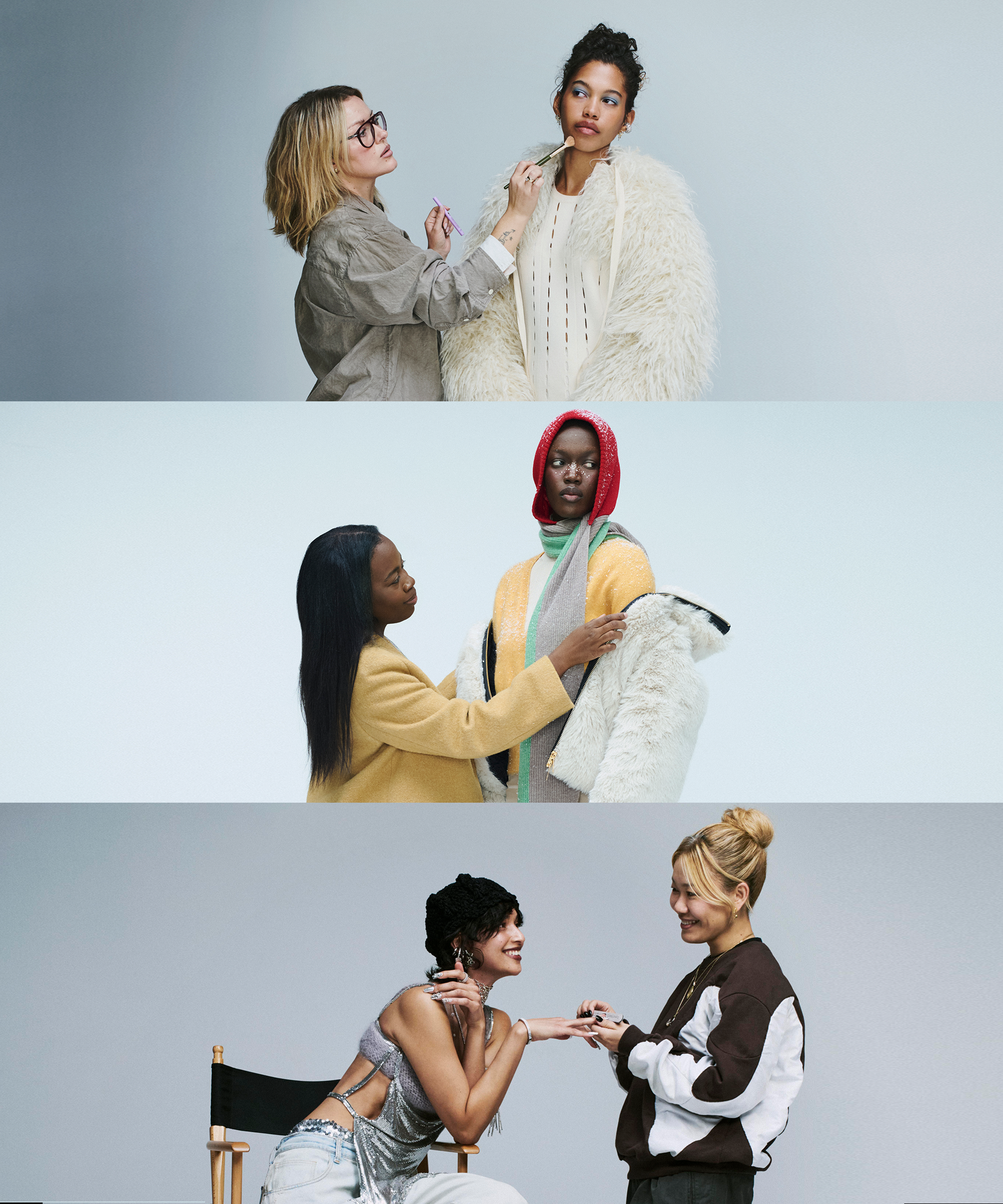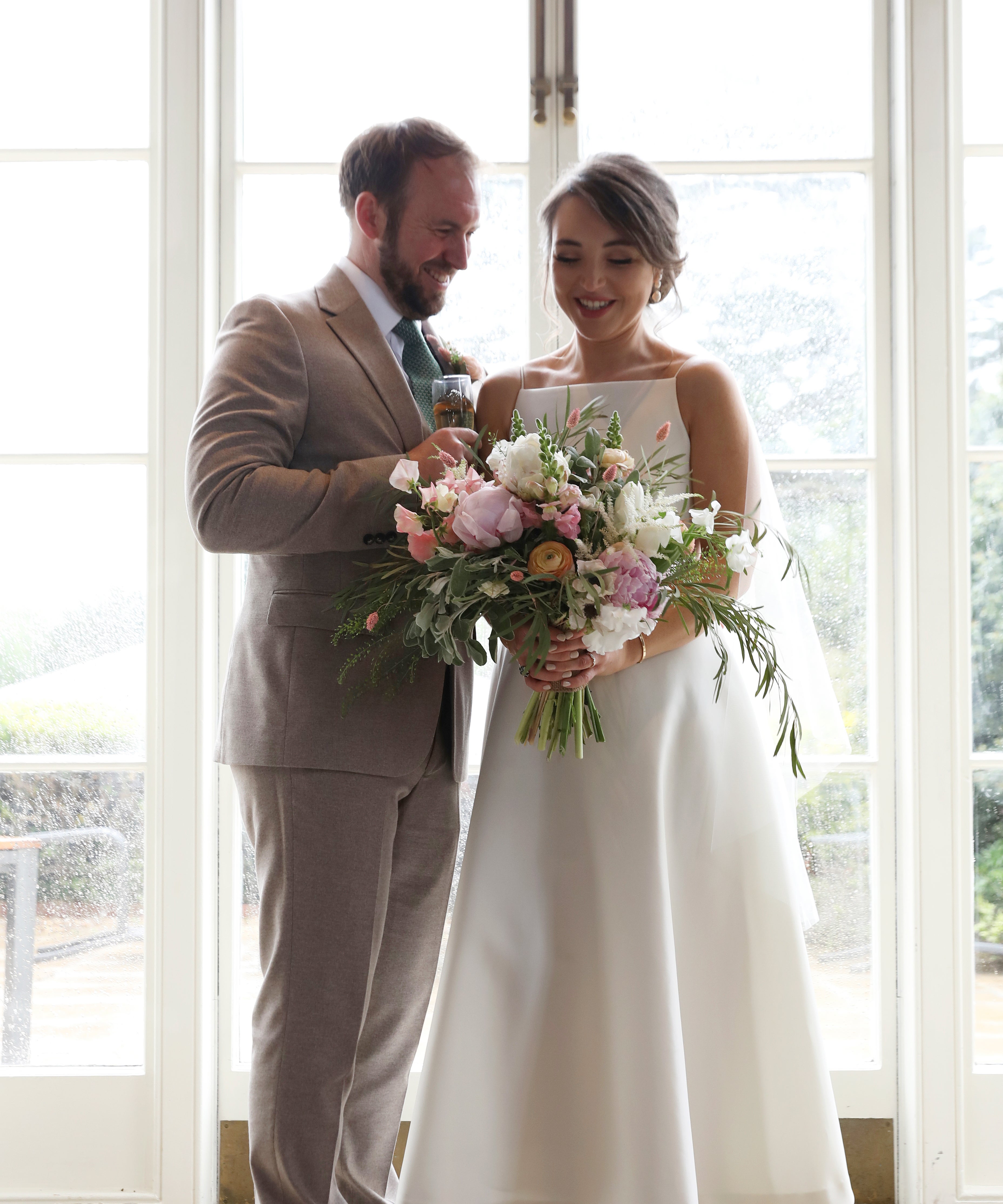
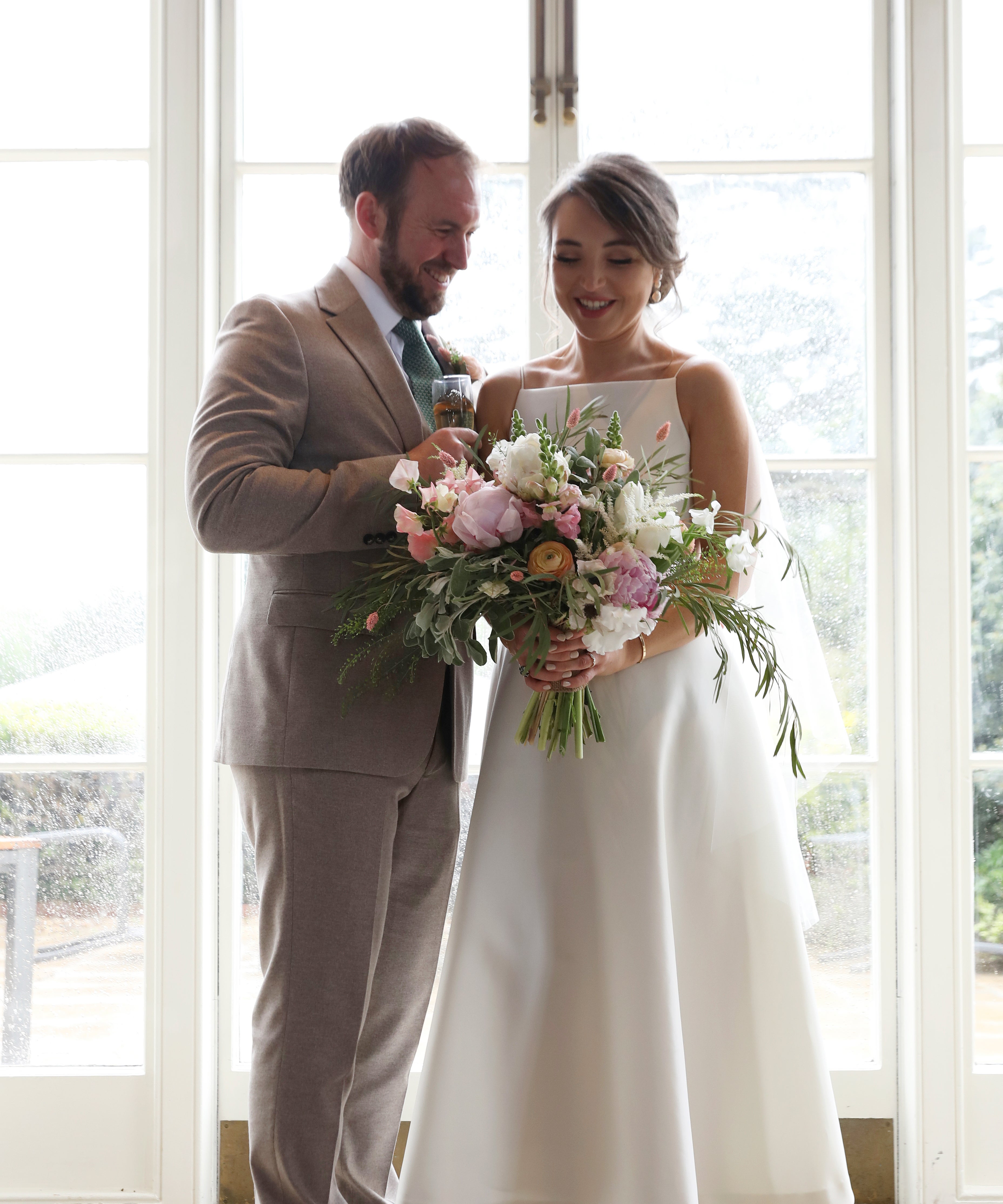
Like many betrothed couples whose nuptial plans were disrupted by the pandemic, Charlie and her now-husband Will Hull had to get creative about their forthcoming festivities. The arrival of Covid-19 brought with it a slew of lockdowns, travel restrictions, and social-distancing rules that knocked the wedding industry — and its millions of brides and grooms — off course, leading some to opt for virtual ceremonies, micro-weddings, or elopements while others postponed to a later date. In all circumstances, however, one question remained the same: What about the dress?
In order to keep their initial wedding date, Charlie and Will were required to switch their indoor venue, which introduced Covid-related restrictions on table arrangements and bar access, and scale down their list of invitees from 120 people to 30. For Hull, a change in attire swiftly followed suit. Instead of the vintage-inspired, beaded number she had originally ordered from Net-a-Porter for the occasion, Charlie went for a minimalist design from H&M which had the potential to become the shorter style that, deep down, she says she wanted all along. Charlie then altered the hem to land just above her ankle to complement her 5’2” frame and, at the last minute, bought a matching bolero jacket for what turned out to be an unseasonably chilly spring day.
“I ended up going for a really simple A-line midi dress as I felt that, being under a marquee in my parents’ garden with only 30 guests, the first dress was too much for that setting. I wanted to feel like my dress fit in with the new style of the day,” she says. While she describes herself as someone who enjoys keeping up with the latest trends, Hull says that she had no qualms about making the sartorial swap, especially when it meant finding something great on the high street without the hefty price tag: “I was completely open to it. To me, feeling comfortable was most important.”
Hull isn’t the only bride who’s gotten cold feet, so to speak, about their pre-pandemic bridalwear plans. According to bridal stylists and designers Refinery29 spoke with for this story, their clients have had to be more nimble in every aspect of the wedding planning process, and dresses are no exception. Whether it’s adjustments to the same gown that’s been untouched and stowed away since early 2020 or a full-on change of ensemble, some dresses are undergoing as many transformations as the main events themselves. Since personal style can very well change over the course of a regular year, let alone one unlike any other, it’s not surprising that brides are altering their gowns accordingly.
“Women are getting more accustomed to bending and twisting, whether it’s for guest count numbers, event design, even experiential add-ons,” says Carrie Goldberg, Weddings & Travel director at Harper’s Bazaar. “People are adding and adjusting on all those fronts, so why not do it with the dress?” She has seen the trend take form in a number of ways, including the removal of sleeves to accommodate unforeseen changes in season or setting.
Goldberg offers the example of a bride who, after postponing her destination wedding in Italy by two years, has since added embroidered detailing to her gown and reconstructed its bodice for a more fitted silhouette to evoke a sense of newness for when her big — belated — day arrives in 2022. The corresponding accessories and veil have been modified, too. “It’s really just about tweaking the look so it feels fresh to [the wearer]now rather than feeling like they’re wearing a dress that’s years old,” Goldberg explains.
Considering how much space a dress can take up against a different backdrop is another design element that’s sent certain styles back to the tailor. “If your guest number shrank and you were originally planning on wearing a huge gown, maybe it’s about wearing a slimmer style to the reception and only wearing that bigger gown down the aisle,” Goldberg says. “In a space with so few people, you take up a lot more space than your guest count does.”
Goldberg further illustrates this point with another anecdote, featuring what was once an indoor winter wedding at a dramatic urban venue that morphed into an outdoor summer event. In keeping with the revised aesthetic of the upcoming celebrations, the bride decided to remove her gown’s embroidered sleeves to create a sleeveless V-neck look better suited to her sun-dappled surroundings.
When you’ve canceled your wedding three or even four times, you want to wear [a dress]to just feel happy.
Stephanie White, Odylyne the Ceremony
Katherine Holmgren, co-founder and business development director at the modern eveningwear and bridal label Galvan, has been navigating similarly upended circumstances with her clients. As business crescendos in tandem with easing restrictions and a mounting eagerness to gather in person, women who had put styles on hold for 2020 are finally ready to commit. But the pandemic is an ever-evolving situation, and so, too, are the wardrobe needs of many brides-to-be.
“There are definitely some women who are leaving their dress just as it is — can’t wait to wear it, have been waiting to wear it all year. And then there are others who are changing lengths, adding coverups such as a silk jacket in the same material and color as their slip dress, or a long silk trench coat over a dress to be worn outdoors versus indoors, for instance,” Holmgren shares. One Galvan bride found her feet constrained beneath a lengthy hem that had been tailored to sweep the floor when worn with a pair of 4-inch heels. Now that her traditional church wedding and ballroom reception will be a beachside affair, she’s having her gown cropped short enough so she could comfortably go barefoot in the sand.
Another phenomenon that Holmgren and Goldberg are both seeing take off is the curation of a wedding wardrobe rather than a singular focus on the dream dress. With the rise of more and smaller events, brides are compiling a series of outfits to compensate for an absence of fashion in the last year. An upside to this trend is the occasion it gives them to reveal more of themselves (figuratively, but in some cases literally) in their dress choices. By approaching the wedding, or in some cases a whole wedding weekend, as a series of memorable vignettes, finding a look that underscores the specialness of each moment appeals to brides itching to put their neglected styling muscles to work. It’s also an exercise in adaptability. An example of this, Goldberg says, would be turning that sleek column-like dress purchased with the intention of walking down the aisle into something to change into before dinner instead.
Outfit changes are also a way to turn up the festive factor, which is particularly welcome after such a grim and stagnant spell of isolation. “Every time you walk into a room in a new outfit you signal to your guests that the party is nowhere near over, says Goldberg.” For brides who had micro-weddings during the peak of Covid and plan to host a larger celebratory fête down the line, a traditional ceremony-type gown may no longer be in order. And the appetite for shorter frocks that started during the early stages of lockdown continues to have an impact on bridal attire.
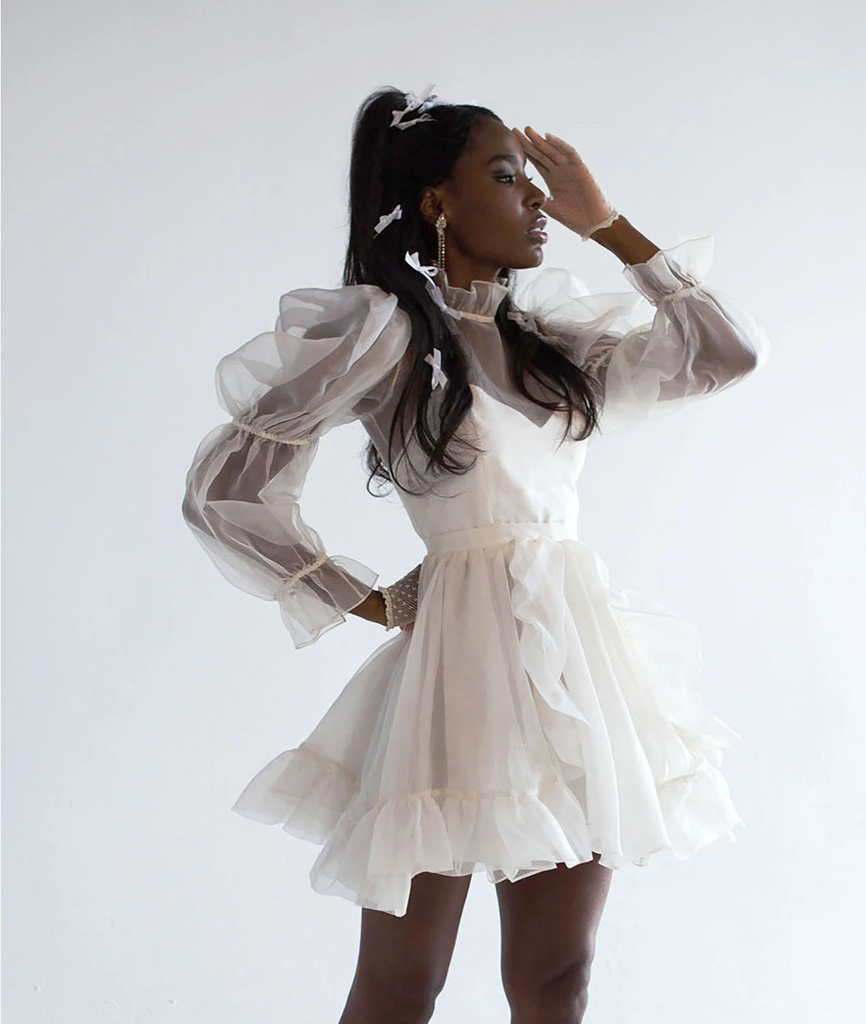
For designer Stephanie White of Odylyne the Ceremony, it has shaped an entire collection. The capsule, set to launch this week, is a direct reaction to inquiries White was receiving over the past year and half from brides and stockists alike, including requests for shorter versions of the label’s signature silhouettes and the incorporation of more high-low hems. By cutting down on fabric and production, White was also able to create more affordable and versatile versions of her gowns for her cost-conscious clients. Her hit Mini Caspian dress, featuring a sheer puff sleeve and ethereal high-neck collar, has taken over Instagram feeds and courthouses across the globe.
“We’re launching a whole capsule collection of mini dresses just because of the success of this style,” White says. “I feel like it’s the dress that, when you’ve canceled your wedding three or even four times, you want to wear to just feel happy. So hopefully I can make a couple more really happy designs.”
Short or long, sleek or voluminous, classic or unexpected, what’s certain about the spate of matrimonial looks on the post-Covid horizon is that they won’t always fall within the boundaries of tradition. Pandemic weddings, postponed or otherwise, have opened up more opportunities for brides to express themselves.
“One outcome of the past year which I think is really refreshing is there seems to be a much wider range of outfits that brides are interested in for their weddings, and a lot more flexibility in what you can wear to get married,” Holmgren says. “It’s not that the traditional bride doesn’t still exist. But I think the more ways brides can express themselves, the better.”
Like what you see? How about some more R29 goodness, right here?
25 Places To Buy A Wedding Dress Online


